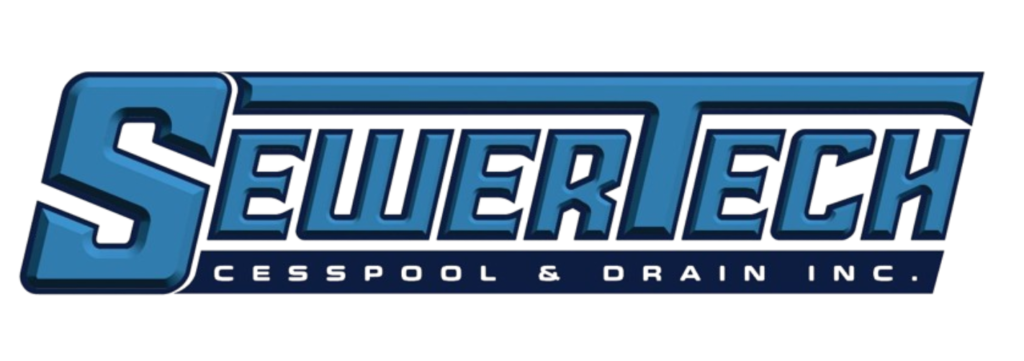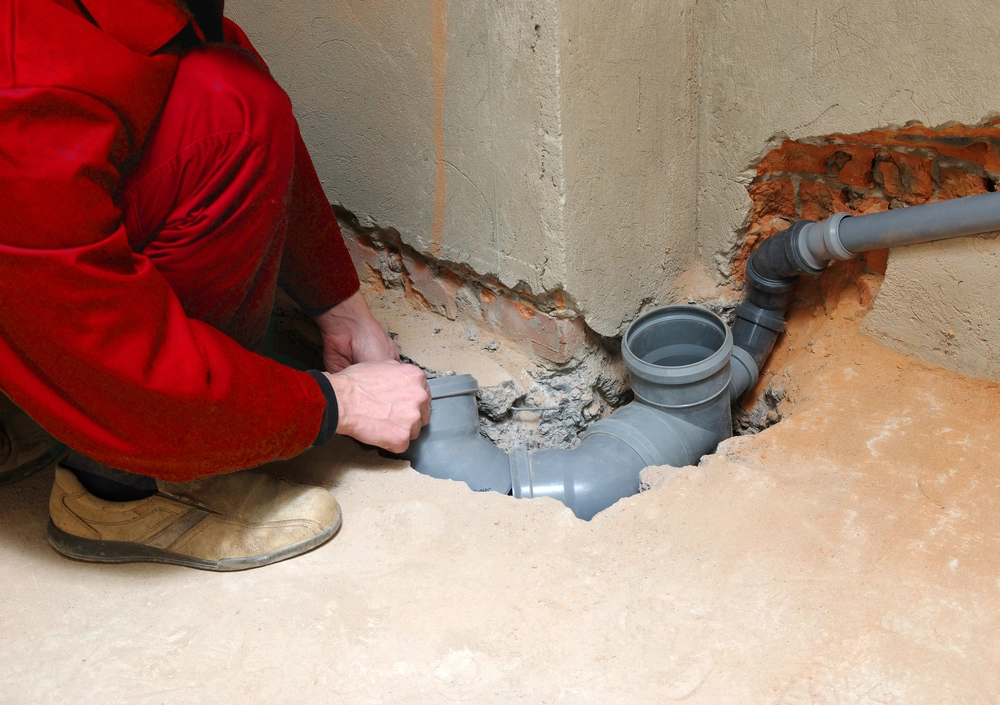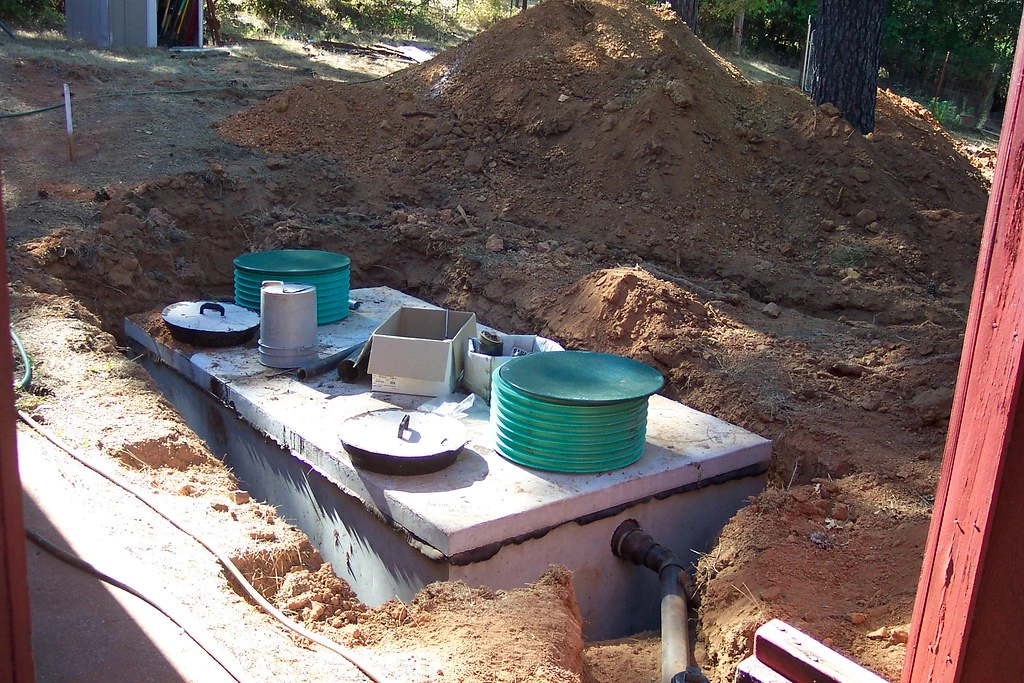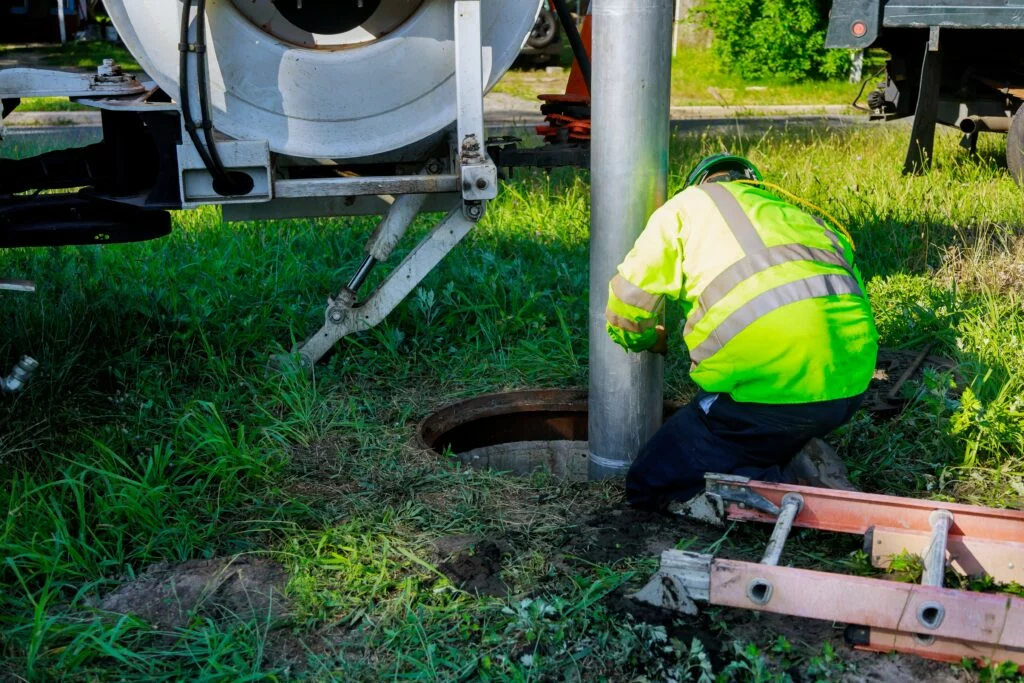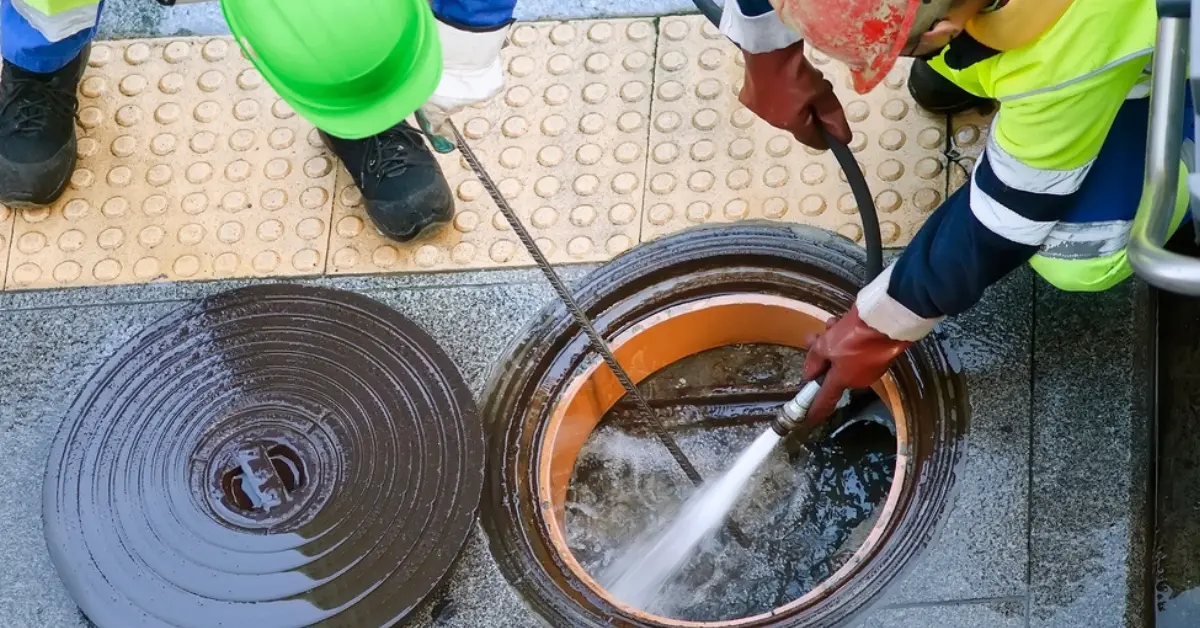Cesspool pumping and maintenance keep your home safe, prevent backups, and protect your yard and groundwater. A cesspool collects wastewater underground, and the solid waste stays behind. If not removed regularly, this buildup can cause slow drains, messy overflows, and damage to your property.
Your full cesspool will show you signs like odour, gurgling sound, or wastewater backing up. Most homes should pump their cesspool every 3–5 years, depending on tank size and household use. On-time pumping prevents slow drains, foul smells, and costly emergency repairs.
If you’re a Long Island homeowner, following local rules is important too. SewerTechLI provides licensed, reliable cesspool pumping, inspections, and ongoing maintenance.
What is Cesspool Pumping & Maintenance?
A cesspool is an underground system that collects wastewater from your home. Over time, solid waste builds up inside and, if not pumped regularly, it can cause slow drains, sewage backups, foul odors, and even property damage. Regular cesspool pumping not only keeps your Long Island home safe but also protects your yard, groundwater, and your family’s health.
Every drop of water that leaves your sink, shower, or toilet goes somewhere. But where? In homes with cesspools, all that wastewater flows into a large underground pit. The liquid seeps into the ground, while the heavier waste sinks and stays behind.
The problem? Over time, it fills the pit, leaving you with slow drains, unpleasant odors, or worse, a messy overflow. That’s where professional cesspool pumping in Suffolk County comes in. A vacuum truck removes the waste, giving your system a reset. Cesspool service also includes inspections, routine maintenance, and emergency pumping, ensuring your system stays reliable year-round.
And cesspool service goes a step further. It also includes inspections, emergency call-outs, and regular maintenance. Think of it like routine checkups for your home’s underground waste system, keeping it healthy so you don’t end up with a headache later.

Why Regular Cesspool Pumping is Important
Stop Nasty Backups Before They Even Start.
Imagine this: You’re hosting a big family dinner, and suddenly, your toilets won’t flush. Worse, dirty water starts backing up into your showers. This isn’t just a bad day. It’s a full-blown health hazard. Scheduling emergency cesspool pumping in Suffolk County prevents this nightmare scenario by making sure waste has somewhere to go.
Say Goodbye to Sewage Smells.
Nothing ruins a beautiful backyard barbecue faster than the faint whiff of… sewage. A full cesspool is the number one culprit behind those mysterious, unpleasant odors. It’s likely time to call cesspool maintenance in Long Island. It’s the fastest way to get your fresh air back.
Protect Your Family’s Health.
This isn’t just about convenience; it’s about safety. An overflowing cesspool can leak untreated waste into the ground. This contaminates the soil and can even pollute groundwater. That’s a serious risk to your family’s well-being and your community’s environment.
Save a Fortune in Repairs.
Here’s the bottom line: The few hundred dollars you spend on a routine pump-out is nothing compared to the bill for a catastrophic system failure. At the same time, cesspool replacement in Suffolk County can run into tens of thousands for a full replacement. A little maintenance now is the smartest investment you can make.

How Often Should You Pump a Cesspool?
Think of your cesspool like a trash can, you can only ignore it for so long before it’s full. On average, most cesspools need pumping every 3 to 5 years, but the right schedule really depends on your household.
- How many people live in the house – More people = more water and waste.
- How much water you use – Families who run lots of laundry or love long showers will fill a cesspool faster.
- Size of the cesspool – A smaller pit can’t hold as much, so it needs attention more often.
- What goes down the drain – Grease, wipes, and other non-flushables speed up the buildup.
A good rule? Don’t wait until you see or smell a problem..Schedule for a cesspool inspection in Suffolk County every couple of years. A professional can tell you if it’s time to pump before issues sneak up on you.
Staying on top of it is always cheaper and easier than dealing with an overflow later.
5 Warning Signs Your Cesspool Needs Pumping NOW
Your house will tell you when there’s trouble. You just have to know what to look for. Ignoring these signs is asking for a nasty surprise.
- Listen to your drains.
If every sink and toilet drains slowly, take note. That’s your first clue something’s wrong. Gurgling sounds from the pipes are a big red flag.
- Follow your nose.
A whiff of sewage outside is bad news. It means waste isn’t draining properly. That smell is a clear cry for help.
- Watch your yard.
See a patch of grass that’s weirdly green and soggy? That’s not good. It’s probably leaking sewage acting as fertilizer.
- Check the toilets.
This is the scariest sign. If water backs up into your tub when you flush, stop immediately. You have a serious emergency.
- See more bugs?
A sudden swarm of flies or mosquitoes near the drain area can mean trouble is brewing right under your feet.
If you notice these, book same-day cesspool pumping on Long Island immediately to avoid damage.

The Cesspool Pumping Process (Step by Step)
Step 1: Initial Inspection
First, the technician checks your cesspool for damage, sludge levels, and accessibility. Think of it as a quick “health check” for your tank. Got it? Great!
Now that the tank got its check-up, let’s move to the next exciting part… setting the stage!
Step 2: Preparing the Area
The lids are lifted, the driveway is cleared, and the vacuum truck gets into position. It’s kind of like prepping for a mini construction show—popcorn optional, but fun to watch if you’re curious!
And now, the moment we’ve all been waiting for… the main act!
Step 3: Pumping the Waste
The vacuum truck starts suctioning out all the solids and liquids. It’s surprisingly satisfying to see it all disappear. If your cesspool could clap, it totally would.
The hard work is done, but we’re not done pampering it yet…
Step 4: Cleaning and Flushing
The tank gets a thorough rinse to remove leftover sludge. Picture giving your cesspool a little spa day. It sounds weird, but it’s necessary!
Almost there, let’s double-check everything before we call it a wrap…
Step 5: Final Check
The technician inspects the tank one last time. They make sure it’s fully functional, no surprises lurking, and everything is running smoothly.
And for the grand finale… drumroll, please!
Step 6: Proper Waste Disposal
The removed waste is safely transported to a licensed treatment facility. No mess, no stress, and your property stays safe.
Pro tip: Clear driveways and remove obstacles before the appointment. It makes the job faster, cheaper, and much less stressful for everyone.
And there you have it! From inspection to cleanup, your cesspool goes from full and sluggish to fresh and happy. A little professional care now saves you from big, smelly headaches later.
For more details, see our sewer jetting services in Long Island, which can help clear stubborn blockages beyond standard pumping.

Cost of Cesspool Pumping & Maintenance
Curious about cesspool pumping costs on Long Island? Smaller tanks usually cost around $200. If the tank is hard to reach or you need emergency service, the price can go over $1,000. When excavation with a machine is needed, it typically adds $300 to $1,200, depending on the job.
Here’s what changes the price:
- Tank size – Bigger tanks need more time and effort to pump.
- Access difficulty – Buried tanks or blocked driveways add to the cost.
- Location – Service rates vary by city and state.
- Emergency calls – After-hours or same-day service usually costs more.
Money-saving tip: Stick to a regular pumping schedule. Maintenance plans help spread costs and avoid unexpected bills.
Local Regulations & Permits: Why Long Island Rules Are a Big Deal
On Long Island, cesspool rules are serious business. This isn’t just red tape. It’s about protecting our water. Our sole-source aquifer is the only place we get our drinking water. What goes into the ground directly impacts what comes out of our taps.
Suffolk County’s Strict Stance
Suffolk County has been a leader with its Reclaim Our Water Initiative. If you have an old cesspool, you need to know this:
The Upgrade Mandate: If you sell your home or get a building permit for a major renovation (like adding a bedroom), you must upgrade your outdated cesspool to a new nitrogen-reducing septic system.
It’s the Law: This isn’t a suggestion. It’s required under the Suffolk County Sanitary Code. Skipping this step can derail a home sale or leave you with massive fines.
Financial Help is Available
We know this is a significant cost. The good news? You’re not alone. Suffolk County offers grants and reimbursement programs to help homeowners cover the cost of this mandatory upgrade. This can save you thousands of dollars. Taking advantage of these programs makes the upgrade more affordable and protects our community’s health.
Always check with your local health department before any work begins. They will tell you exactly what permits you need. A reputable local company like SewerTech LI handles this process every day. We know the inspectors, the paperwork, and how to get your system up to code, efficiently and correctly. Don’t get caught off guard by local laws. Let our expertise guide you.
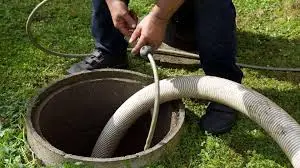
Smart Habits to Maintain a Healthy Cesspool
Watch What Goes Down the Drain
Your drains aren’t a trash can. Be kind to your system. Only flush wastewater, toilet paper, and human waste. Everything else? Toss it in the trash.
Keep These Out of Your Drains:
- Wipes – even “flushable” ones clog systems.
- Cooking grease or oil – it hardens and causes blockages.
- Chemicals – bleach, paint, or cleaners harm helpful bacteria.
- Food scraps – use a compost bin, not the sink.
Save Water
- Too much water strains your system.
- Fix leaky faucets and toilets.
- Run full loads in washing machines and dishwashers.
- Take shorter showers when you can.
Skip the Quick Fixes
Avoid additives promising to clean or unclog your cesspool. Most don’t work and some cause more harm. Regular pumping is the only true solution.
Plan Regular Check-Ups
Don’t wait for a problem. Schedule inspections every few years. It’s the best way to catch small issues before they become big ones.

Finding a Reputable Service Provider
Your home is your biggest investment. Don’t trust it to just anyone.
- Ask About Licensing and Insurance: Always choose a company that is fully licensed and insured. This protects you from liability.
- Check Local Reviews and Reputation: Read Google My Business and Facebook reviews. A company with a long history of positive local reviews is a safe bet.
- Get a Detailed Estimate: Avoid companies that give vague quotes over the phone. A reputable provider will explain all potential costs upfront.
- Ask About the Process: Do they just pump, or do they also inspect? A thorough inspection can identify small problems before they become catastrophic failures.
- Choose a Local Expert like SewerTechLI: A company familiar with Long Island soil types, water tables, and most importantly, local regulations is invaluable. They can advise you on compliance and potential upgrade options.
Conclusion
Your cesspool might not be on your mind every day—and that’s normal. But a little attention now can save you a lot of trouble later. Schedule regular pumping, keep an eye out for warning signs, and do simple upkeep to avoid backups, bad odors, and costly repairs.
If you’d rather skip the stress, SewerTechLI is here to help. From inspections and pumping to full maintenance, we make cesspool care easy. Call us anytime for 24/7 emergency cesspool pumping in Long Island, and let our team handle the dirty work so you can enjoy your home worry-free.
FAQs
Question: What are the signs your cesspool is full?
Answer: Key signs your cesspool is full include slow-draining sinks and toilets, unpleasant sewage odors in your yard or home, gurgling sounds from your plumbing, and unusually soggy or lush green grass over the drain area.
Question: Can you pump a cesspool in the winter?
Answer: Yes, you can pump a cesspool in the winter. Professional vacuum trucks are designed to handle cold-weather operations. The ground is often easier to access before a deep freeze, making it a good time to schedule service before the spring thaw.
Question: How long does a pumping service take?
Answer: Most pumping jobs take 1–2 hours, depending on tank size and access.
